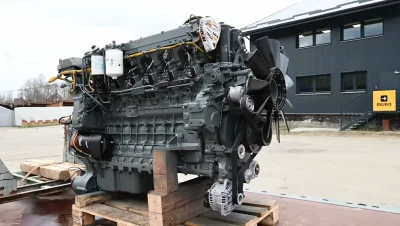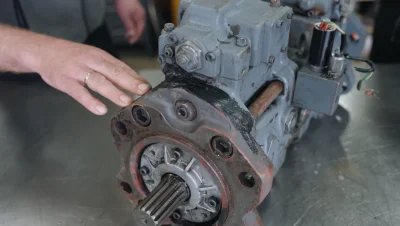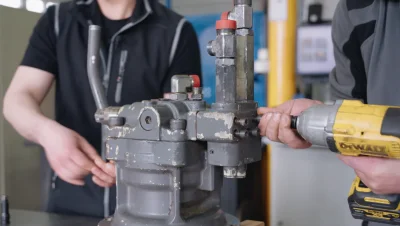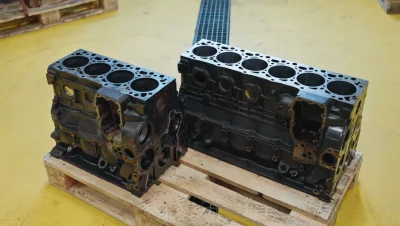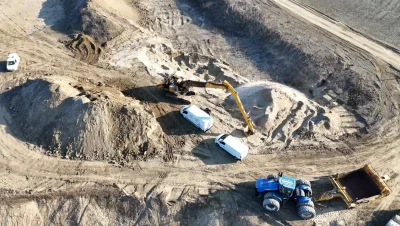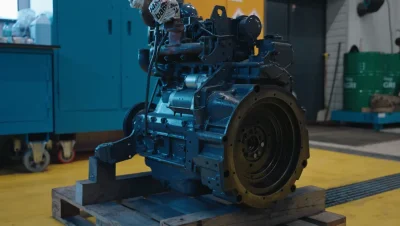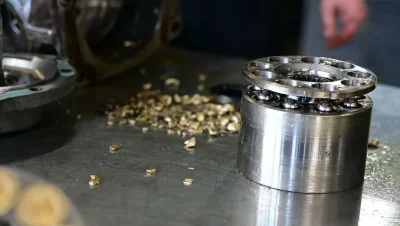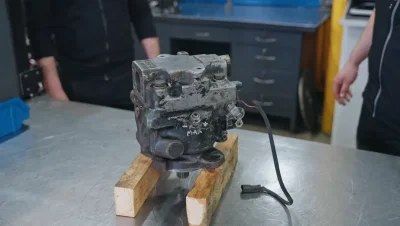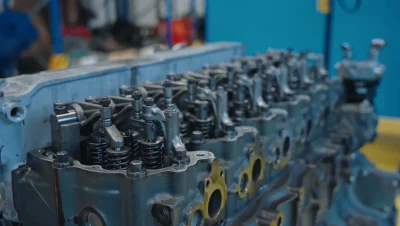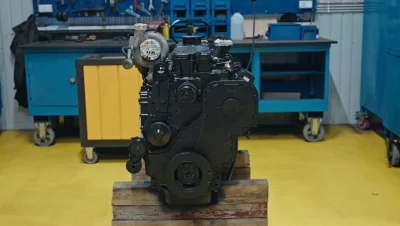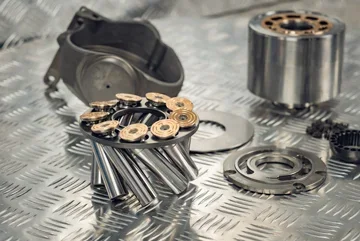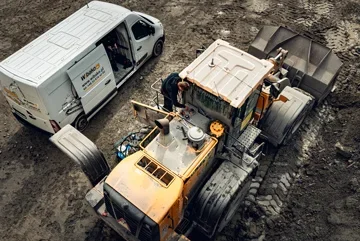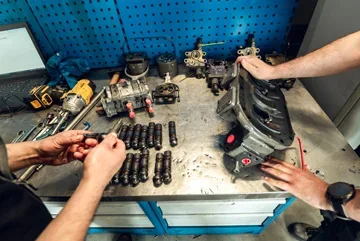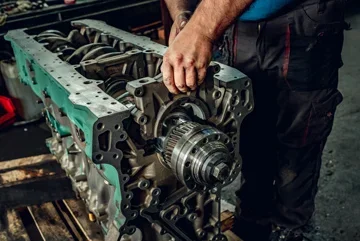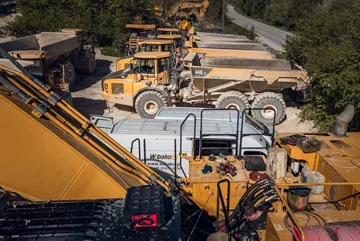How did the repair of the 70-ton giant go?
Caterpillar 374F in our workshop In the world of construction machinery, there are models that command respect just by their presence. One such giant is the Caterpillar 374F – a powerful, nearly 80-ton tracked excavator equipped with a 7-ton bucket. When such a machine breaks down, there is no room for half-measures – the repair must be well thought out, comprehensive, and executed with the utmost precision. In this article, we will talk about one of the more demanding orders that came to our workshop.
The beginning – failure of the swing motors
A 2016 CAT 374F arrived at our service center, in which both M2X swing motors were damaged. Such components operate under enormous loads – it is enough to mention that the bucket of this machine weighs 7 tons when empty, and with material, it easily reaches 20 tons. Therefore, the two swing motors must withstand forces that cannot be compared to typical equipment. The damage to the motors was classic for such loads – wear of the rotary groups. We performed a complete regeneration on both units, after which we proceeded to assembly. A key stage turned out to be the correct installation of the sealing ring between the motor and the reducer. In case of an assembly error – even a slight cutting of the seal – the transmission oil could escape outside, causing further damage.
Hydraulic system service – not just filter replacement
Before installing the second motor, we also replaced the seals in the area of its seating. We then proceeded to inspect the hydraulic system. The oil tank, return filters, supply filter – everything was scrutinized. And rightly so, because in the filters, we found not only metal shavings but even fragments of pistons from damaged motors. Simply replacing the filters was not enough – it was necessary to filter all the oil using a filtration unit. The machine used three filters: two return filters and one supply filter. The interiors of the housings were thoroughly cleaned, and the worn inserts were replaced. This is important because hydraulic oil contaminated with shavings can cause a cascade of damage throughout the system – from pumps, through distributors, to actuators.
Surprise after starting – the rotation operates automatically
After completing the work and starting the machine, we noticed that the excavator's rotation operates automatically in one direction, even without activating the joystick. A quick diagnosis indicated that the slider in one of the sections of the hydraulic distributor was blocked. We managed to unblock it, but the client, not wanting to take any risks, decided to disassemble and conduct a comprehensive revision of the entire distributor.
Distributor 900 kg – disassembly, cleaning, assembly
The distributor weighed nearly 900 kg, which speaks for itself. It was thoroughly disassembled – each section, slider, coil, and sensor were verified. The problem lay in one of the sections responsible for rotation – its slider was slightly scratched, most likely by shavings. After cleaning, replacing seals, and carefully reassembling all components, we proceeded to install the distributor in the machine. The modern distributor in the Caterpillar 374F is electronically controlled, not hydraulically – coils and joystick control through electrical signals were used. This reduced the number of hydraulic lines in the control system, but the repair also required attention during the installation of electrical harnesses.
Final stage – testing and commissioning
After filling the machine with fresh oil, bleeding the system, and tightening all lines – it was time for testing. Checking pressures, working movements, operation of the rotation, and joystick functions went smoothly. The failure was eliminated, and the Caterpillar 374F returned to the construction site, ready for further work.
The entire film can be seen here.



